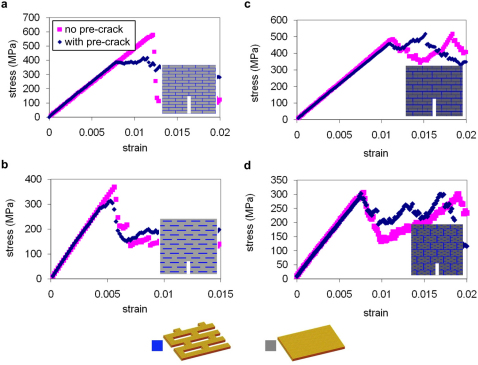Figure 3. Comparison of the stress-strain response of two-hierarchy (a, b) and three-hierarchy (c, d) materials, considering both self-similar (a, c) and dissimilar (c, d) designs.
a, Stress-strain curves for the two-hierarchy bone-like composite structures, with and without presence of a pre-crack (pre-crack length 5.8 μm). b, Stress-strain curves for two-hierarchy biocalcite-like composite structures, with and without presence of a pre-crack (pre-crack length 6.96 μm). c, Three-hierarchy self-similar structure made of bone-like composite structure at both the second and third levels, with and without presence of a pre-crack (pre-crack length 4.8 μm). The data shows that the sensitivity of fracture strength vs. crack size is much smaller for the three-hierarchy material. d, Three-hierarchy dissimilar structure made of biocalcite-like composite structure at the second level and bone-like at the third level, with and without presence of a pre-crack (pre-crack length 5.8 μm). Similar as for the case presented in panel c, the sensitivity of fracture strength vs. crack size is smaller for the three-hierarchy material than for the two-hierarchy case.

